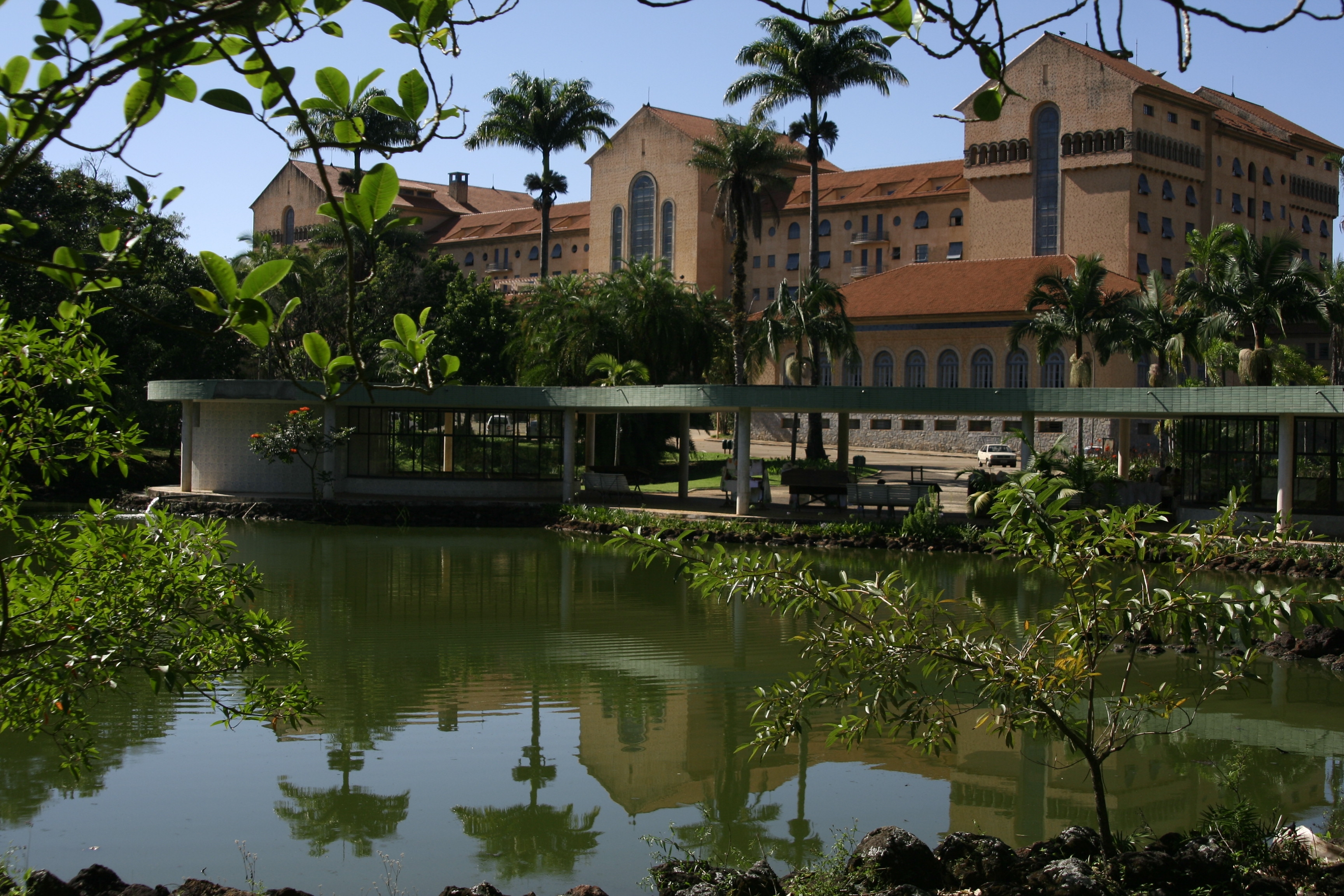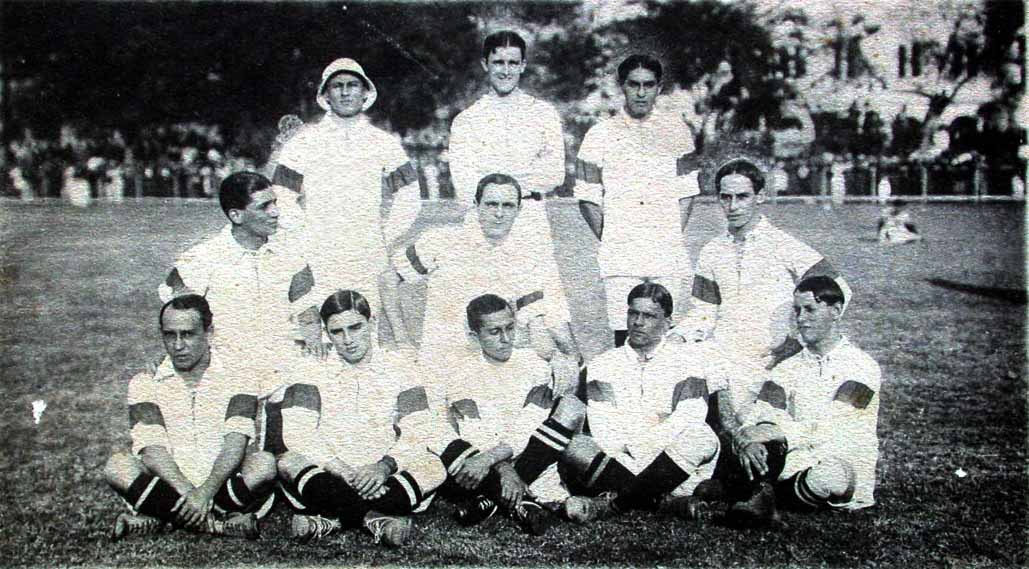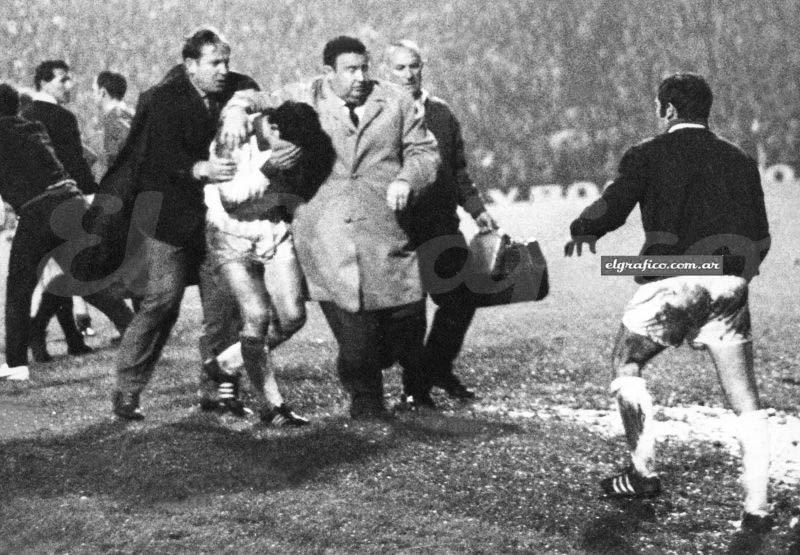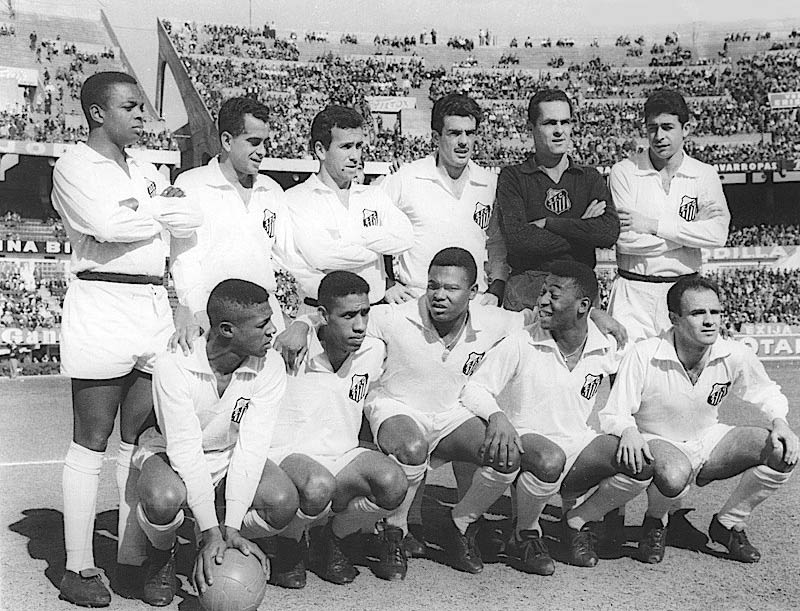|
Francisco Ferreira De Aguiar
Francisco Ferreira de Aguiar (11 November 1930 – 22 May 2012), known as Chico Formiga or simply Formiga, was a Brazilian footballer and manager. Mainly a central defender, he could also play as a defensive midfielder. Formiga had his playing career mainly associated with Santos. As a manager, he was in charge of top tier sides Santos, São Paulo, Corinthians, Cruzeiro and América Mineiro. Playing career Club Born in Araxá, Minas Gerais, Formiga joined Santos' youth setup in May 1950, but made his first team debut in the month after being promoted to the main squad by manager Artigas. Formiga became a starter at ''Peixe'' in the 1952 season, winning the Campeonato Paulista twice for the club in 1955 and 1956. In the start of the 1957 season, he moved to Palmeiras for a fee of ₢$2 million plus the transfers of Laércio and Jair Rosa Pinto. Formiga returned to Santos in 1959, taking part of the ''Os Santásticos'' squad that won two Copa Libertadores and two I ... [...More Info...] [...Related Items...] OR: [Wikipedia] [Google] [Baidu] |
Araxá
Araxá () is a municipality in Western Minas Gerais state, Brazil. Its estimated population by IBGE (Brazilian Institute of Geography and Statistics) in 2020 is 107,337 inhabitants and the area of the municipality is , with making up the urban perimeter. Geography The elevation of the city center is . The highest point in the municipality is Serrra da Bocaina at , and the lowest point is the Capivara river at . In 2004 the annual average temperature was . The annual rainfall was .Prefeitura de Araxá Demographics *Population in 1970: 35,676 *Population in 1980: 53,404 *Population in 1991: 65,911 *Population in 2000: 78,997 (77,743 lived in the urban area)IBG ...[...More Info...] [...Related Items...] OR: [Wikipedia] [Google] [Baidu] |
Association Football
Association football, more commonly known as football or soccer, is a team sport played between two teams of 11 players who primarily use their feet to propel the ball around a rectangular field called a pitch. The objective of the game is to score more goals than the opposition by moving the ball beyond the goal line into a rectangular framed goal defended by the opposing side. Traditionally, the game has been played over two 45 minute halves, for a total match time of 90 minutes. With an estimated 250 million players active in over 200 countries, it is considered the world's most popular sport. The game of association football is played in accordance with the Laws of the Game, a set of rules that has been in effect since 1863 with the International Football Association Board (IFAB) maintaining them since 1886. The game is played with a football that is in circumference. The two teams compete to get the ball into the other team's goal (between the posts and under t ... [...More Info...] [...Related Items...] OR: [Wikipedia] [Google] [Baidu] |
Pacaembu Stadium
Estádio Municipal Paulo Machado de Carvalho, colloquially known as Estádio do Pacaembu (), is an Art Deco stadium in São Paulo, located in the Pacaembu neighborhood. The stadium is owned by the Municipal Prefecture of São Paulo. The stadium was inaugurated on 27 April 1940, in the presence of the Brazilian President Getúlio Vargas, the interventor Adhemar de Barros and the mayor of São Paulo, Prestes Maia. The stadium holds 40,199 people and its pitch dimensions are 104 m of length by 70 m of width. The stadium is named after Paulo Machado de Carvalho. He was the 1958 FIFA World Cup Brazilian delegation chief, the founder of Rede Record, one of the largest television networks in Brazil and was known as "''Marechal da Vitória''" (''Marshal of Victory''). Pacaembu is frequently used to host home matches of the ''Big 4'' football clubs of the State of São Paulo, of which Corinthians, Palmeiras and São Paulo are based in the capital city itself, and only Santos is based i ... [...More Info...] [...Related Items...] OR: [Wikipedia] [Google] [Baidu] |
Chile National Football Team
Chile, officially the Republic of Chile, is a country in the western part of South America. It is the southernmost country in the world, and the closest to Antarctica, occupying a long and narrow strip of land between the Andes to the east and the Pacific Ocean to the west. Chile covers an area of , with a population of 17.5 million as of 2017. It shares land borders with Peru to the north, Bolivia to the north-east, Argentina to the east, and the Drake Passage in the far south. Chile also controls the Pacific islands of Juan Fernández, Isla Salas y Gómez, Desventuradas, and Easter Island in Oceania. It also claims about of Antarctica under the Chilean Antarctic Territory. The country's capital and largest city is Santiago, and its national language is Spanish. Spain conquered and colonized the region in the mid-16th century, replacing Inca rule, but failing to conquer the independent Mapuche who inhabited what is now south-central Chile. In 1818, after declaring in ... [...More Info...] [...Related Items...] OR: [Wikipedia] [Google] [Baidu] |
Brazil National Football Team
The Brazil national football team ( pt, Seleção Brasileira de Futebol), nicknamed ''Seleção Canarinho'' (‘Canary Squad’, after their bright yellow jersey), represents Brazil in men's international football and is administered by the Brazilian Football Confederation (CBF), the governing body for football in Brazil. They have been a member of FIFA since 1923 and a member of CONMEBOL since 1916. Brazil is the most successful national team in the FIFA World Cup, being crowned winner five times: 1958, 1962, 1970, 1994 and 2002. The ''Seleção'' also has the best overall performance in the World Cup competition, both in proportional and absolute terms, with a record of 76 victories in 114 matches played, 129 goal difference, 247 points, and 19 losses. It is the only national team to have played in all World Cup editions without any absence nor need for playoffs, and the only team to have won the World Cup in four different continents: once in Europe ( 1958 Sweden), ... [...More Info...] [...Related Items...] OR: [Wikipedia] [Google] [Baidu] |
Intercontinental Cup (football)
The European/South American Cup, more commonly known as the Intercontinental Cup and from 1980 to 2004 as the Toyota European/South American Cup (abbreviated as Toyota Cup) for sponsorship reasons, was an international association football, football competition endorsed by UEFA (Europe) and CONMEBOL (South America), contested between representative clubs from these confederations (representatives of most developed continents in the football world), usually the winners of the UEFA Champions League and the South American Copa Libertadores. It ran from 1960 to 2004, when it was succeeded by the FIFA Club World Cup, FIFA Club World Championship, although they both ran concurrently in 2000. From its formation in 1960 to 1979, the competition was as a two-legged tie, with a playoff if necessary until 1968, and Penalty kick (association football), penalty kicks later. During the 1970s, European participation in the Intercontinental Cup became a running question due to controversial eve ... [...More Info...] [...Related Items...] OR: [Wikipedia] [Google] [Baidu] |
Copa Libertadores
The CONMEBOL Libertadores, also known as the Copa Libertadores de América ( pt, Copa Libertadores da América), is an annual international club football competition organized by CONMEBOL since 1960. It is the highest level of competition in South American club football. The tournament is named after the ''Libertadores'' (Spanish and Portuguese for ''liberators''), the leaders of the Latin American wars of independence, so a literal translation of its former name into English is "''America's Liberators Cup''". The competition has had several formats over its lifetime. Initially, only the champions of the South American leagues participated. In 1966, the runners-up of the South American leagues began to join. In 1998, Mexican teams were invited to compete and contested regularly from 2000 until 2016. In 2000 the tournament was expanded from 20 to 32 teams. Today at least four clubs per country compete in the tournament, with Argentina and Brazil having the most representatives ( ... [...More Info...] [...Related Items...] OR: [Wikipedia] [Google] [Baidu] |
Os Santásticos
''Os Santásticos'' (, ''The Santastics'') is the nickname for the group of Santos Futebol Clube players coached by Lula and Antoninho that won a total of 25 titles between 1959 and 1974, including two Copa Libertadores. Often considered one of the strongest teams ever assembled in any sport, scoring over 3000 goals during this period, with an average of over 2.5 goals per match. Also known as ''O Balé Branco'' (, ''The White Ballet'') or ''Time dos Sonhos'' (, ''Dream Team''), they dominated Brazilian football and became a symbol of '' Jogo Bonito'' thanks to figures such as Gilmar, Mauro, Mengálvio, Coutinho, Pepe and the iconic Pelé. Pelé made Santos FC famous around the world in this revolutionary era, therefore his lesser-known teammates are best known as "Pelé's friends." The beginning In 1956, Waldemar de Brito took Pelé to Santos, an industrial and port city in the state of São Paulo, to try out for professional club Santos Futebol Clube telling the direc ... [...More Info...] [...Related Items...] OR: [Wikipedia] [Google] [Baidu] |
Jair Da Rosa Pinto
Jair da Rosa Pinto (21 March 1921 – 28 July 2005), or simply Jair, was an association footballer who played offensive midfielder – one of the leading Brazilian footballers of the 1940s and 1950s, who is best remembered for his performance in Brazil's 1950 FIFA World Cup campaign. Usually playing as an inside-forward, Jair da Rosa was noted for his free-role style of play and was most known for his pace and technical ability. History Pre-1950 Born March 21, 1921, in Quatis, Rio de Janeiro, Jair started his career as a left winger at Madureira (in Rio) in 1938. He made his debut for the Brazil squad just two years later, on the March 5, 1940, in a 6–1 defeat by Argentina, though Jair did score the goal – the first of 22 he was to score for Brazil. The Brazilian team regularly featured Jair throughout the 1940s, as his club career led him first to Vasco da Gama, then to Flamengo – remaining in Rio. His greatest moment during this time, however, was in 1944, when h ... [...More Info...] [...Related Items...] OR: [Wikipedia] [Google] [Baidu] |
Laércio José Milani
Laercio may refer to: * Laercio Oliveira (born 1959), Brazilian politician * Laércio Gomes Costa (born 1990), Brazilian football striker *Laércio Soldá Laércio Soldá (born 22 March 1993), sometimes known simply as Laércio (), is a Brazilian footballer who plays as a central defender for Sukhothai in the Thai League. Club career Lajeadense Born in Marau, Rio Grande do Sul, Laércio Sold� ... (born 1993), Brazilian football defender * Laércio (footballer, born 1998), Brazilian football midfielder {{hndis, Laercio ... [...More Info...] [...Related Items...] OR: [Wikipedia] [Google] [Baidu] |
Brazilian Cruzeiro (1942–1967)
The (first) cruzeiro (Cr$) was the official currency of Brazil from 1942 to 1967. It replaced the old real (pl. ''réis''), which had been in use since colonial times, at the rate of Rs 1$000 = Cr$1, It was in turn replaced by the cruzeiro novo, at the rate of Cr$1,000 = NCr$1. The name cruzeiro was later reused for two other currencies, which were official in 1970–1986 (initially denominated as the ''cruzeiro novo'' to avoid confusion between new and old currency) and 1990–1993. The cruzeiro was divided into 100 centavos, a convention that persisted through all subsequent Brazilian currencies, but in the first cruzeiro, values below Cr$0.10 were never issued because Rs 10 coins (equivalent to Cr$0.01) had not circulated since the end of the 19th century, and Rs 20 and Rs 50 coins (equivalent to Cr$0.02 and Cr$0.05 respectively) had not been issued since 1935. Initially, the project, dating from the late 1920s, was that the amount to be converted ... [...More Info...] [...Related Items...] OR: [Wikipedia] [Google] [Baidu] |
Campeonato Paulista
The Campeonato Paulista Série A1, commonly known as Campeonato Paulista, nicknamed Paulistão, is the top-flight professional association football, football league in the Brazilian States of Brazil, state of São Paulo (state), São Paulo. Run by the Federação Paulista de Futebol, FPF, the league is contested between 16 clubs and typically lasts from January to April. Rivalries amongst four of the best-known Brazilian teams (Sport Club Corinthians Paulista, Corinthians, Sociedade Esportiva Palmeiras, Palmeiras, Santos FC, Santos and São Paulo FC, São Paulo) have marked the history of the competition. The Campeonato Paulista is the oldest established league in Brazil, being held since 1902 and Professionalism in association football, professionally since 1933. Format Campeonato Paulista is held annually by the Federação Paulista de Futebol (São Paulo State Football Federation), or FPF, amongst teams residing within the state of São Paulo. 20 clubs compete in the highest le ... [...More Info...] [...Related Items...] OR: [Wikipedia] [Google] [Baidu] |







